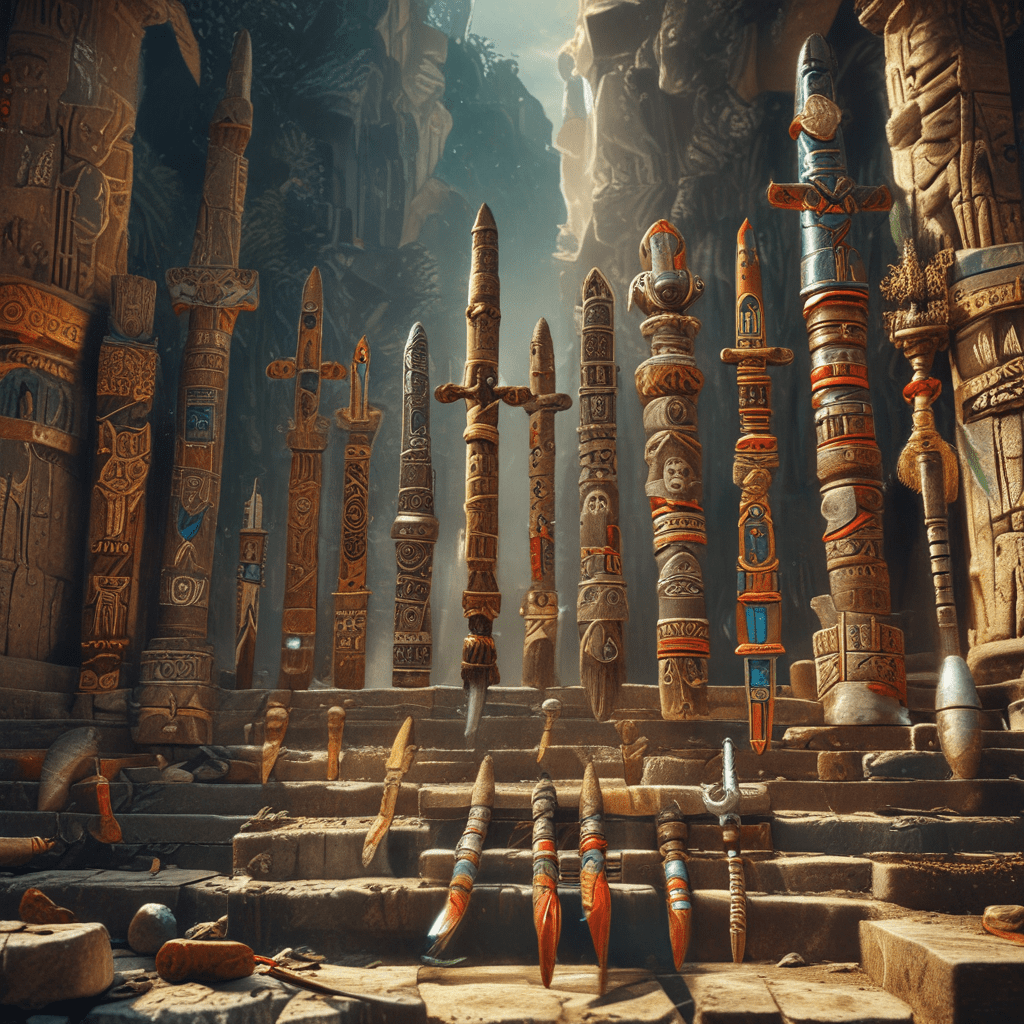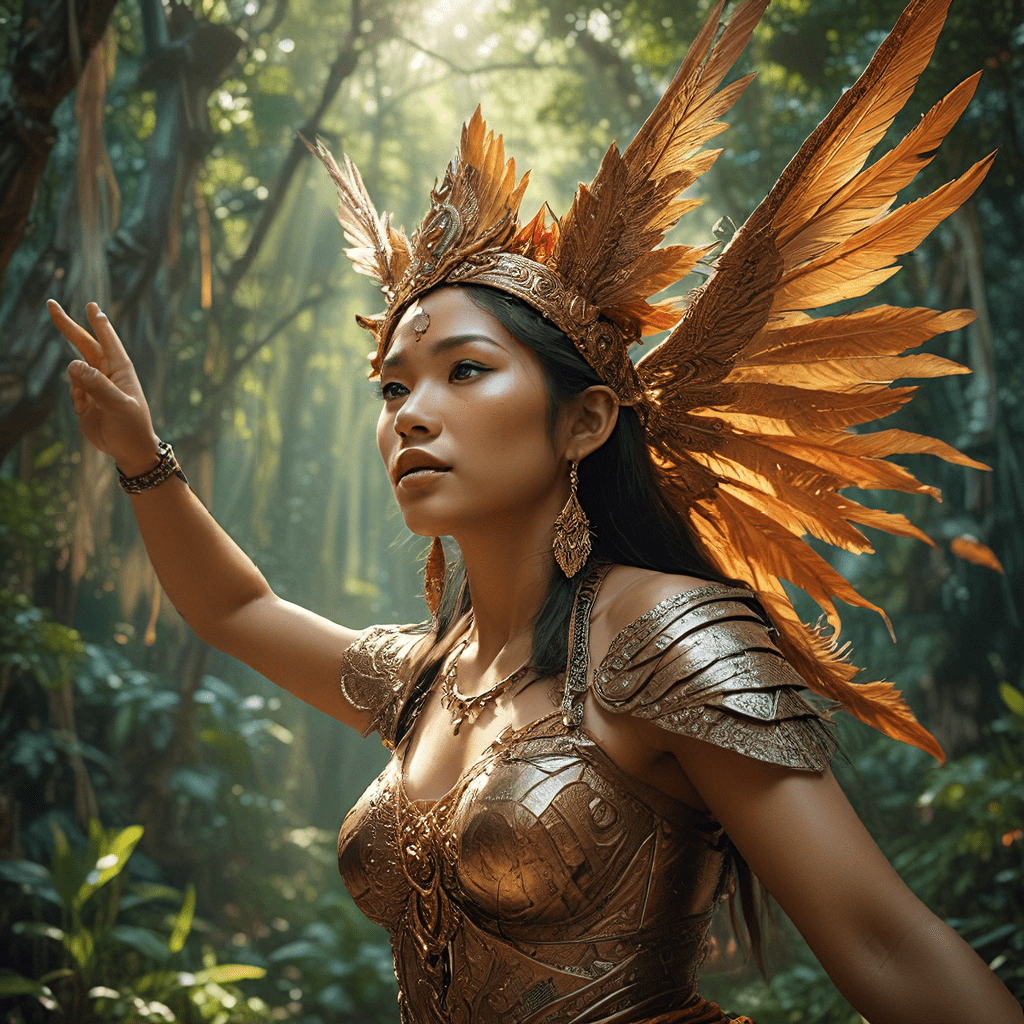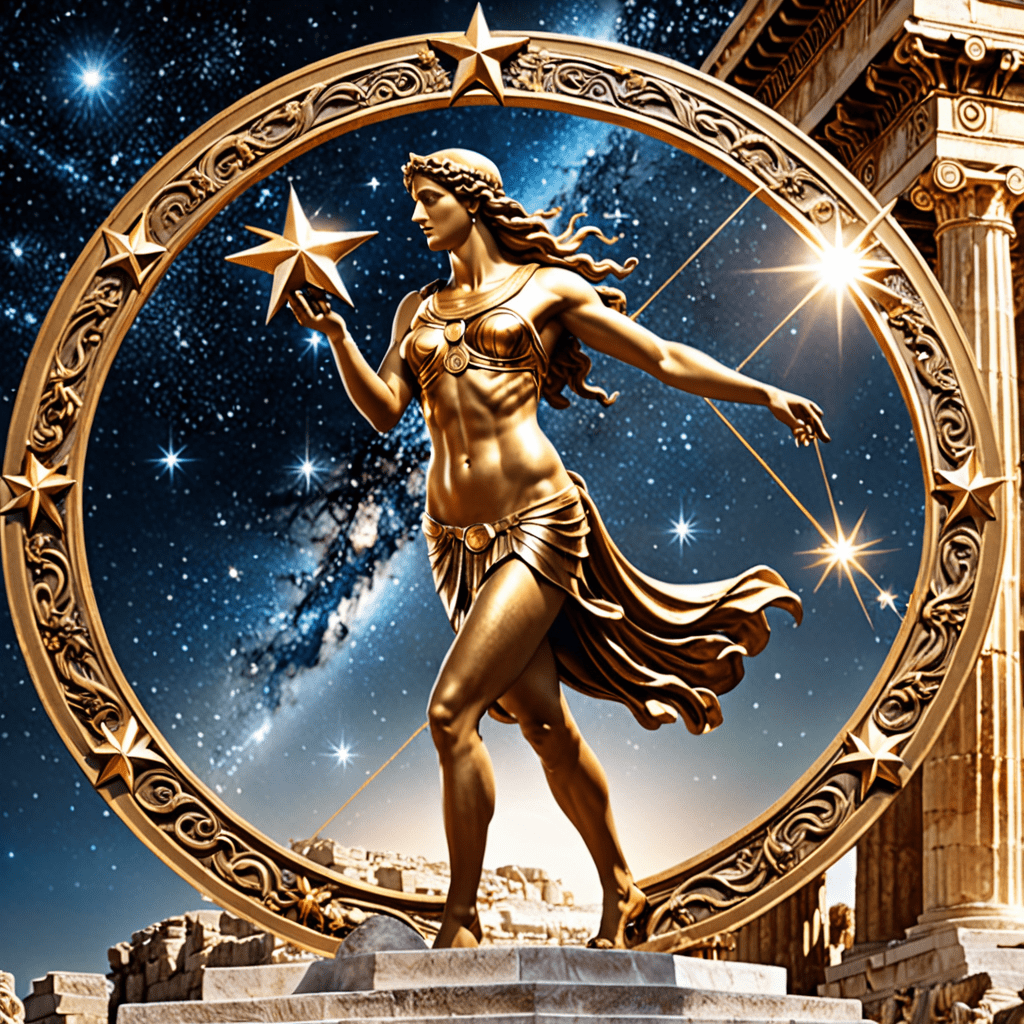Incan Mythical Weapons: A Window into Cosmology and Power
The Incan Empire, a civilization that once dominated the Andes Mountains, believed in a powerful pantheon of gods who wielded mythical weapons. These weapons weren't just tools of warfare; they were embodiments of the gods' power and influence over the natural world. They represented a complex system of beliefs, rituals, and cosmology, revealing the Inca's deep connection to their environment and their understanding of the universe.
The Sun God Inti: Source of Divine Power
In the heart of the Incan religion stood Inti, the Sun God, whose warmth and light were essential for life. Inti was revered as the ultimate source of power, vitality, and prosperity. The Inca believed that Inti's power could be channeled through sacred objects, including weapons, creating a potent link between the divine and the mortal realm. Understanding Inti's power is essential to comprehending the significance of mythical weapons in Incan culture.
The Weapons of the Gods: A Blend of the Supernatural and Material
The mythical weapons of the Inca gods weren't simply fantastical creations. They were often imbued with supernatural qualities and associated with specific deities, reflecting the Incan belief that the gods could exert their influence through the material world. These divine weapons were not just tools of warfare; they were symbols of authority, creation, and the gods' control over the forces of nature.
The Viracocha Staff: Symbol of Creation and Authority
Viracocha, the creator god, is often depicted with a staff that symbolized his power to shape the world. The Viracocha staff represented both creation and authority, as it was believed to be the instrument used to create the universe and, by extension, the Incan Empire. It was a visual reminder of the divine right of Incan rulers, who were considered to be the descendants of Viracocha.
The Inca’s “Thunderbolt”: Weapon of the Storm God
The storm god, known as Illapa, was associated with thunder, lightning, and rain, all powerful forces that could bring both life and destruction. His weapon, the "thunderbolt," was a symbol of his might and control over the weather. The Inca believed that Illapa could hurl lightning bolts from the sky, both as a punishment for wrongdoing and as a way to fertilize the land.
The Power of Myth: How Incan Myths Shaped Reality
Incan myths weren't just stories; they were the foundation of their belief system and guided their daily lives. They provided explanations for natural phenomena, defined social structures, and justified the power of the ruling class. These myths influenced everything from agricultural practices to political decisions. For example, the myth of Inti's journey across the sky explained the cycle of day and night, and the myth of Viracocha's creation of the world justified the Inca's dominion over the land.
The Role of Myth in Warfare: Instilling Fear and Encouraging Courage
Incan warfare was closely intertwined with their mythology. Mythical weapons were not just symbols of power; they were used to instill fear and inspire courage in battle. The image of Illapa wielding his thunderbolt, capable of bringing down devastating storms, was a powerful tool for intimidating enemies. Stories of the gods' victories over mythical beasts fueled the Incan warriors' determination to defend their empire.
The Materiality of Myth: Artifacts and Archaeological Evidence
Incan myths have left behind a tangible legacy in the form of artifacts and archaeological evidence. Stone carvings, ceramics, and textiles often depict scenes from Incan mythology, including the gods and their weapons. The Intihuatana, a stone structure found at various Incan sites, was used for astronomical observations and was closely connected to the worship of Inti. Examining these artifacts helps us understand the depth and complexity of Incan mythology.
Theories on the Origins of Incan Mythology: Indigenous Beliefs vs. Outside Influences
The origins of Incan mythology are a subject of debate. Some scholars believe that Incan mythology grew organically from the indigenous beliefs of the various groups that lived in the Andes region. Other scholars argue that the Inca borrowed elements from other cultures, such as the Chavin and Tiwanaku civilizations, who had their own mythologies. It's likely that Incan mythology was a blend of indigenous traditions and external influences.
The Enduring Legacy of Incan Mythical Weapons: From Ancient Lore to Modern Symbolism
While the Incan Empire fell over 500 years ago, the legacy of their mythical weapons continues to resonate today. Their stories serve as a powerful reminder of the deep connection between humans and the natural world, and the enduring power of belief systems. The symbols associated with these weapons, like the Viracocha staff and the "thunderbolt," continue to be used in modern art, literature, and film, reflecting the enduring influence of Incan mythology.
FAQ
What were the most powerful Incan mythical weapons?
The Viracocha staff, Illapa's thunderbolt, and the weapon of the Pachamama (Earth Mother) are among the most powerful Incan mythical weapons.
How did Incan myths influence their daily lives?
Incan myths provided guidance for everything from agriculture to political decisions. For example, stories of Inti's journey explained the cycle of day and night, and the myth of Viracocha's creation justified the Inca's dominion over the land.
Are there any modern-day examples of Incan mythical weapons being used in popular culture?
The lightning bolt, inspired by Illapa's thunderbolt, is a common symbol in modern art, literature, and film, often representing power and authority.
What is the significance of the Viracocha staff?
The Viracocha staff represented creation and authority, symbolizing the creator god's power to shape the world and the divine right of Incan rulers.




